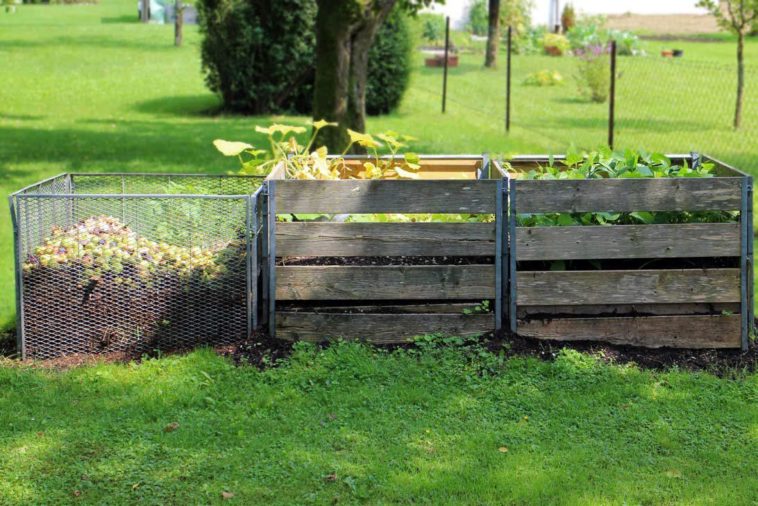A compost heap is much more sophisticated and sensitive than one would think. To ensure a highly effective system and to get optimum yields, it is important to pick and choose the materials you add to your compost heap very wisely.
The materials that should be part of your system are:
Grass/lawn clippings
It is preferred to leave grass clippings out in the sun to dry first before using them in compost, because they form a mat that does not aerate. If green grass clippings are used, it should be in limited quantities and it should be mixed with some brown material first.
Hay
Hay is an excellent material to use in composting. The greener the hay, the richer it is in nitrogen. Hay should be well moistened before adding it to the compost heap.
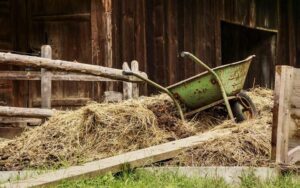
Hay grass.
Leaves
Leaves are one of the best and compostable materials to use. Leaves will lose over 75% of their volume when composted, so what seems like a big pile in the beginning will be much less in the end. Care must be taken because leaves may cause matting down. Prevent matting by shredding the leaves with a lawnmower before putting them into the heap.
Kitchen wastes
Some kitchen wastes such as fruit and vegetable peels, tea bags, coffee grounds and eggshells are excellent composting materials. Avoid composting meat scraps and milk products as they attract pests that may cause problems in the home and in the fields.
As kitchen waste contains enough moisture, it is recommended that you mix it with dryer materials such as sawdust and hay.
Manure
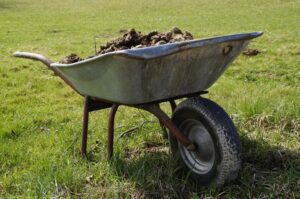
Livestock manure
If composted, horse, cattle, sheep and poultry manure can be very useful to the crops or garden. It is not advisable to apply fresh manure to crops or gardens, as it can burn the plants. Manure will accelerate composting because it heats up the compost heap.
Straw
Straw is a good aerator of a compost heap and helps “greens” to decompose quickly. Straw that has been used as bedding material in stables breaks down even faster, because of its combined structure with manure.
Wood chips and sawdust
Wood chips must be as small as possible, otherwise it may take too long to decompose. Be careful with chemically treated wood, because it could be adding toxic substances such as arsenic to the compost heap.
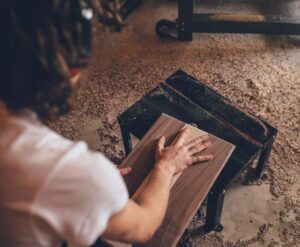
Sawdust from chemically treated wood will pose a problem in your compost heap.
What not to compost:
Chemically treated wooden products
Sawdust can be a very harmful composting material if it is produced from chemically treated wood. Toxic elements such as arsenic, chromium and copper can be found in treated woods and will leak into the compost treated soil. Care must be taken when sawdust is used and you should know the history of the materials before considering it for the compost heap.
Diseased plants
Insect-infected or diseased plants may cause a problem if they are not fully composted. The disease can be transmitted to the crops.
Human waste
It requires temperatures higher than normal in the compost pile to kill pathogens and diseases in human faeces. These diseases can be carried over in compost with very harmful effects. It is better to avoid using human faeces in the compost heap.
Meat, bones and fatty food wastes
The decomposition of these materials takes a considerable time and are therefore not advisable to use in a compost heap. These materials also attract pests like rats, especially in urban areas. This could be harmful to the crops and a pest in the household. Another problem is the odour given off by these materials.
Pernicious weeds
Some plants like ivy, morning glory and some kinds of grasses can react in the compost heap. When chopped, new growth occurs. Some of these weeds also have seeds and if not killed by the heat in the compost heap, they will germinate in the soil of the compost.
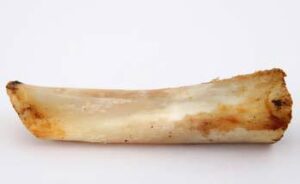
Don’t throw bones in your compost heap.
Pet wastes
Dog and cat faeces may contain diseases harmful to humans and should not even be considered for a compost heap.
We thank the Agricultural Research Council (ARC) of South Africa for the material they provided for the readers of ProagriMedia. For more information visit their website www.arc.agric.za.

